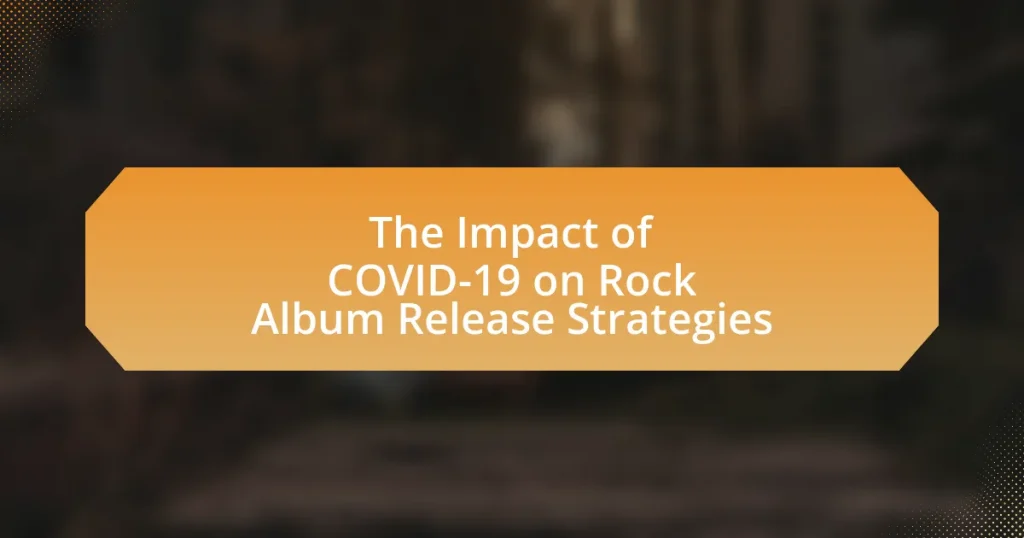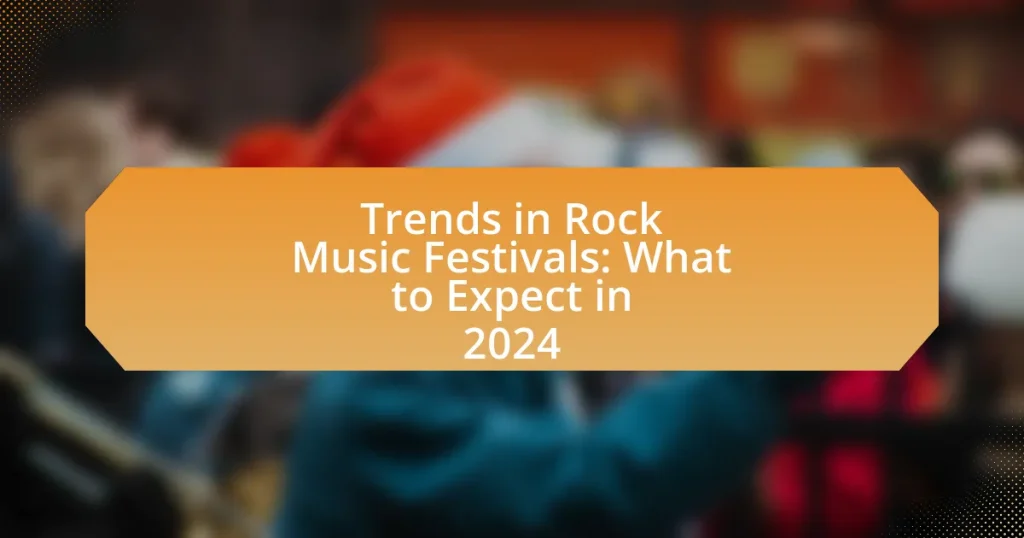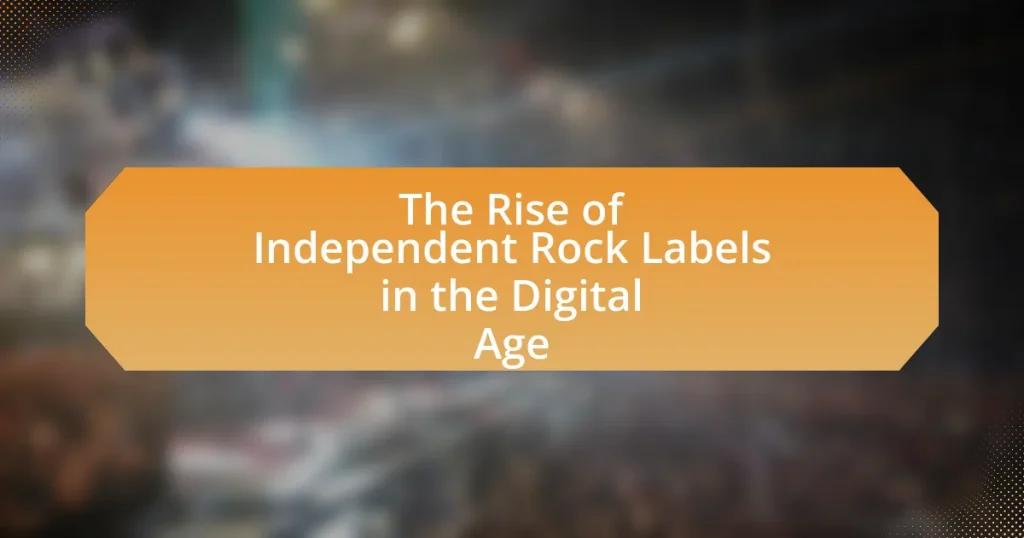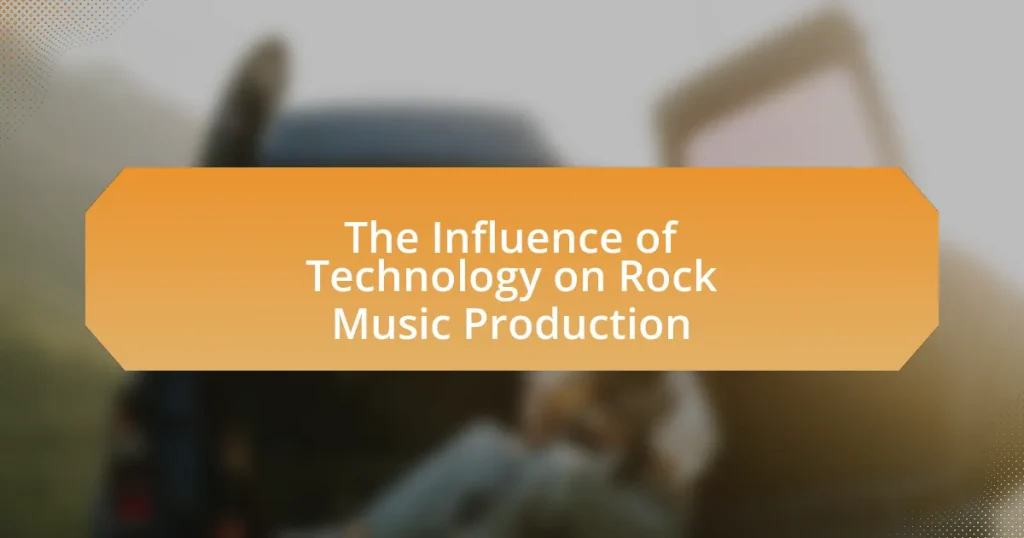The article examines the significant impact of COVID-19 on rock album release strategies, highlighting a shift towards digital releases and virtual promotions as artists adapted to restrictions on live events. It discusses how traditional album release methods were altered, with many artists relying on streaming platforms and social media for promotion, leading to increased digital consumption. Key challenges faced by artists, such as loss of income and disruption of promotional channels, are addressed, along with the emergence of new strategies like virtual concerts and direct-to-fan sales. The article also explores the long-term effects of the pandemic on the music industry and offers insights into best practices for future album releases in a post-COVID world.
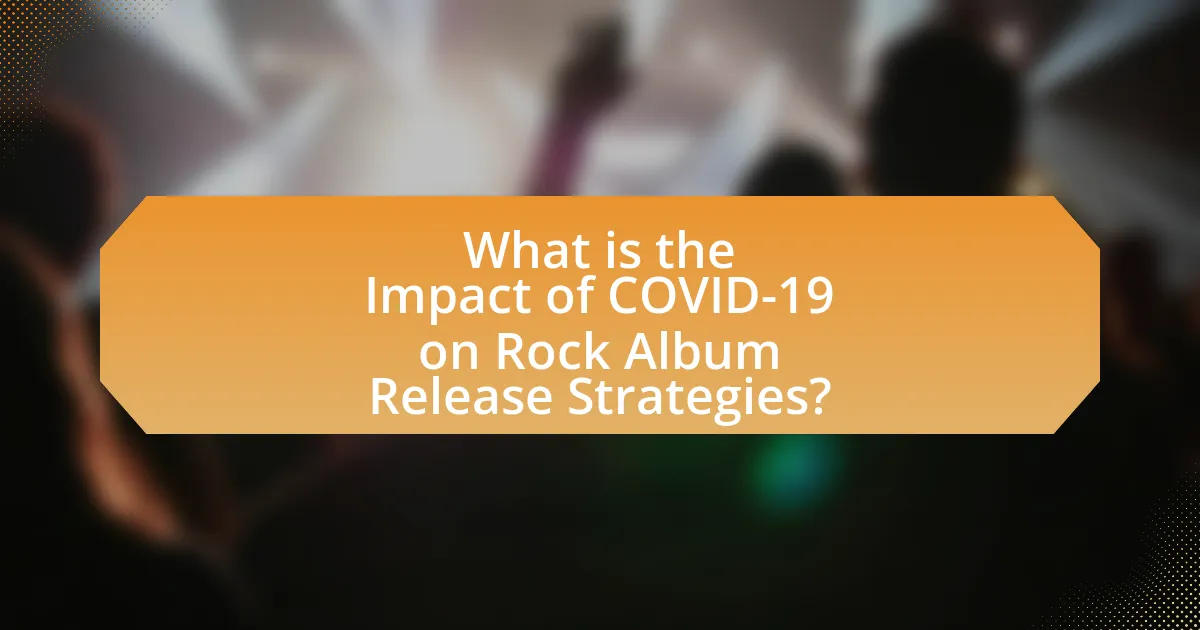
What is the Impact of COVID-19 on Rock Album Release Strategies?
The impact of COVID-19 on rock album release strategies has been significant, leading to a shift towards digital releases and virtual promotions. Many artists postponed physical album launches due to restrictions on live events and gatherings, resulting in a reliance on streaming platforms and social media for promotion. For instance, in 2020, major rock bands like Pearl Jam and Green Day delayed their album releases, opting instead for online engagement through live-streamed performances and social media interactions to maintain fan connection. This shift reflects a broader trend in the music industry where digital consumption has surged, with a 20% increase in streaming during the pandemic, highlighting the necessity for artists to adapt their release strategies to the changing landscape.
How did the pandemic alter traditional album release methods?
The pandemic significantly altered traditional album release methods by accelerating the shift to digital platforms and virtual events. Artists and record labels adapted to restrictions on live performances and in-person gatherings by prioritizing online streaming services for album launches, which became the primary means of reaching audiences. For instance, many artists opted for live-streamed concerts and virtual listening parties, replacing physical album release events. This shift was evidenced by the rise in digital album sales and streaming, with platforms like Spotify and Apple Music reporting increased user engagement during the pandemic. Additionally, the lack of touring opportunities led to a focus on innovative marketing strategies, such as social media campaigns and collaborations with influencers, to promote new releases effectively.
What were the key challenges faced by artists during the pandemic?
Artists faced significant challenges during the pandemic, primarily due to the cancellation of live performances and events, which are crucial for income and exposure. According to a survey conducted by the Artists’ Relief Project, 95% of artists reported a loss of income due to COVID-19, with many unable to sustain their livelihoods. Additionally, the disruption of traditional promotional channels, such as tours and festivals, hindered their ability to reach audiences effectively. The shift to digital platforms also posed challenges, as not all artists had the resources or skills to adapt to online performances and marketing strategies.
How did streaming services influence album releases during COVID-19?
Streaming services significantly influenced album releases during COVID-19 by providing artists with a platform to release music despite physical restrictions. As live performances were canceled and traditional promotional methods became impractical, many artists turned to streaming platforms for direct engagement with fans. For instance, in 2020, major releases from artists like Taylor Swift and Dua Lipa were strategically timed to coincide with streaming service availability, maximizing reach and engagement. Additionally, the rise of digital-only releases became evident, with artists opting to release albums directly on platforms like Spotify and Apple Music, bypassing physical formats entirely. This shift not only allowed for immediate access to new music but also reflected changing consumer behavior, as streaming became the primary method for music consumption during lockdowns.
What new strategies emerged for rock album releases during the pandemic?
New strategies for rock album releases during the pandemic included virtual concerts, direct-to-fan sales, and enhanced digital marketing efforts. Artists adapted to restrictions on live performances by hosting online shows, which allowed them to engage with fans and promote new music simultaneously. Additionally, many musicians shifted towards selling albums directly through their websites or platforms like Bandcamp, bypassing traditional retail channels. This approach not only increased revenue but also fostered a closer connection with fans. Enhanced digital marketing, including social media campaigns and targeted ads, became crucial for reaching audiences as physical promotional events were limited. These strategies reflect a significant shift in how rock albums were released and promoted during the pandemic.
How did virtual concerts change the promotional landscape?
Virtual concerts transformed the promotional landscape by enabling artists to reach global audiences without geographical limitations. This shift allowed musicians to leverage digital platforms for live performances, significantly increasing their visibility and engagement with fans. For instance, during the COVID-19 pandemic, platforms like YouTube and Twitch saw a surge in virtual concert viewership, with some events attracting millions of viewers simultaneously. This change not only reduced the reliance on traditional promotional methods, such as physical tours and in-person events, but also introduced new revenue streams through ticket sales, merchandise, and sponsorships in a digital format.
What role did social media play in album marketing during COVID-19?
Social media played a crucial role in album marketing during COVID-19 by providing artists with a platform to engage directly with fans and promote their music despite physical distancing measures. With live performances largely canceled, artists utilized social media channels like Instagram, Twitter, and TikTok to host virtual concerts, share behind-the-scenes content, and create interactive experiences that maintained fan interest. For instance, many musicians released singles and music videos exclusively on social media, leveraging the platforms’ algorithms to reach wider audiences. According to a report by the International Federation of the Phonographic Industry (IFPI), 2020 saw a significant increase in music consumption through digital platforms, highlighting the effectiveness of social media in driving album sales and streaming numbers during the pandemic.
What are the long-term effects of COVID-19 on the music industry?
The long-term effects of COVID-19 on the music industry include a significant shift towards digital platforms and changes in live performance dynamics. The pandemic accelerated the adoption of streaming services, with a 20% increase in global music streaming revenue reported in 2020, as artists and labels adapted to restrictions on live events. Additionally, the industry has seen a rise in virtual concerts and hybrid events, which are likely to remain popular due to their accessibility and lower overhead costs. Furthermore, the pandemic has prompted a reevaluation of album release strategies, with many artists opting for staggered releases and singles to maintain audience engagement over time. These changes indicate a lasting transformation in how music is produced, distributed, and consumed.
How might album release strategies evolve post-pandemic?
Album release strategies are likely to evolve post-pandemic by increasingly incorporating digital-first approaches and hybrid models that blend virtual and physical experiences. The pandemic accelerated the shift towards online platforms for music consumption, with streaming services seeing a significant rise in usage; for instance, Spotify reported a 24% increase in monthly active users in 2020. As a result, artists may prioritize digital releases and virtual events, such as live-streamed concerts, to reach wider audiences. Additionally, the trend of limited physical releases, like vinyl or special editions, may continue as artists seek to create unique experiences for fans while navigating ongoing uncertainties in live events. This evolution reflects a broader adaptation to consumer behavior changes driven by the pandemic.
What lessons can artists learn from the pandemic experience?
Artists can learn the importance of adaptability and innovation from the pandemic experience. The COVID-19 crisis forced artists to pivot their strategies, leading to increased reliance on digital platforms for performances and album releases. For instance, many musicians turned to live-streaming concerts, which not only maintained audience engagement but also expanded their reach beyond geographical limitations. According to a report by the International Federation of the Phonographic Industry, digital music consumption surged during the pandemic, highlighting the necessity for artists to embrace technology in their promotional strategies. This shift underscores the need for artists to be flexible and open to new methods of connecting with their audience, ensuring sustainability in an unpredictable environment.
How did different rock genres respond to the pandemic’s challenges?
Different rock genres adapted to the pandemic’s challenges by shifting their release strategies and engaging with fans through virtual platforms. For instance, indie rock artists frequently opted for digital releases and live-streamed performances to maintain audience connection, while heavy metal bands utilized social media to promote new music and merchandise, capitalizing on the increased online engagement during lockdowns. Additionally, classic rock bands often postponed album releases to align with potential touring opportunities, reflecting a cautious approach to the uncertain landscape. These adaptations highlight the resilience and creativity within the rock music community in response to the pandemic’s disruptions.
What unique approaches did indie rock artists take during COVID-19?
Indie rock artists adopted several unique approaches during COVID-19, primarily focusing on virtual engagement and innovative release strategies. Many artists turned to live-streaming concerts to connect with fans, utilizing platforms like Instagram Live and Bandcamp to host performances from their homes. This shift allowed them to maintain a presence in the music scene despite physical distancing measures. Additionally, some artists released music directly to fans through digital platforms, bypassing traditional distribution channels, which was evident in the rise of surprise album drops and pay-what-you-want pricing models on platforms like Bandcamp. These strategies not only fostered community but also adapted to the changing landscape of music consumption during the pandemic.
How did mainstream rock bands adapt their release strategies?
Mainstream rock bands adapted their release strategies by shifting to digital platforms and altering their promotional tactics. With the onset of COVID-19, traditional album launches were disrupted, leading bands to prioritize online streaming services and social media for releases. For instance, many bands opted for surprise album drops or virtual concerts to engage fans directly, as seen with artists like Pearl Jam and Green Day, who utilized platforms like YouTube and Instagram to maintain visibility. This shift was necessary due to restrictions on live performances and in-person events, compelling bands to innovate in how they connect with audiences and distribute their music.
What are the best practices for releasing a rock album in a post-COVID world?
The best practices for releasing a rock album in a post-COVID world include leveraging digital platforms, engaging with fans through virtual events, and focusing on targeted marketing strategies. Digital platforms such as streaming services and social media have become essential for reaching audiences, as physical sales have declined. Engaging fans through live-streamed concerts or Q&A sessions fosters a sense of community and connection, which is crucial in a time when in-person events are limited. Additionally, targeted marketing strategies that utilize data analytics can help identify and reach specific audience segments effectively, ensuring that promotional efforts are efficient and impactful. These practices are supported by the shift in consumer behavior towards online consumption and the increased importance of direct artist-to-fan communication observed during the pandemic.
How can artists effectively utilize digital platforms for album launches?
Artists can effectively utilize digital platforms for album launches by leveraging social media, streaming services, and virtual events to engage their audience. Social media platforms like Instagram and Twitter allow artists to create buzz through teasers, countdowns, and interactive content, which can increase anticipation and engagement. Streaming services such as Spotify and Apple Music provide a direct channel for album distribution and can feature exclusive content or pre-release listening parties to attract listeners. Additionally, hosting virtual launch events on platforms like YouTube or Twitch enables artists to perform live, interact with fans in real-time, and reach a global audience, which has become increasingly important during the COVID-19 pandemic when traditional in-person events are limited. According to a report by the International Federation of the Phonographic Industry, digital music consumption has surged, highlighting the effectiveness of these platforms in reaching audiences during challenging times.
What strategies can enhance fan engagement during album releases?
To enhance fan engagement during album releases, artists can utilize interactive live-streaming events, social media challenges, and exclusive content offerings. Live-streaming events allow fans to participate in real-time Q&A sessions, creating a sense of community and direct interaction with the artist. For instance, during the COVID-19 pandemic, many artists successfully engaged fans through platforms like Instagram Live and YouTube, where they performed songs and shared behind-the-scenes stories, leading to increased viewer engagement and connection. Social media challenges, such as TikTok dance trends or hashtag campaigns, encourage fans to create and share their own content related to the album, fostering a participatory culture. Additionally, offering exclusive content, such as early access to songs or limited-edition merchandise, incentivizes fans to engage more deeply with the release. These strategies have been shown to significantly boost fan interaction and loyalty, as evidenced by increased streaming numbers and social media mentions during album launches.
